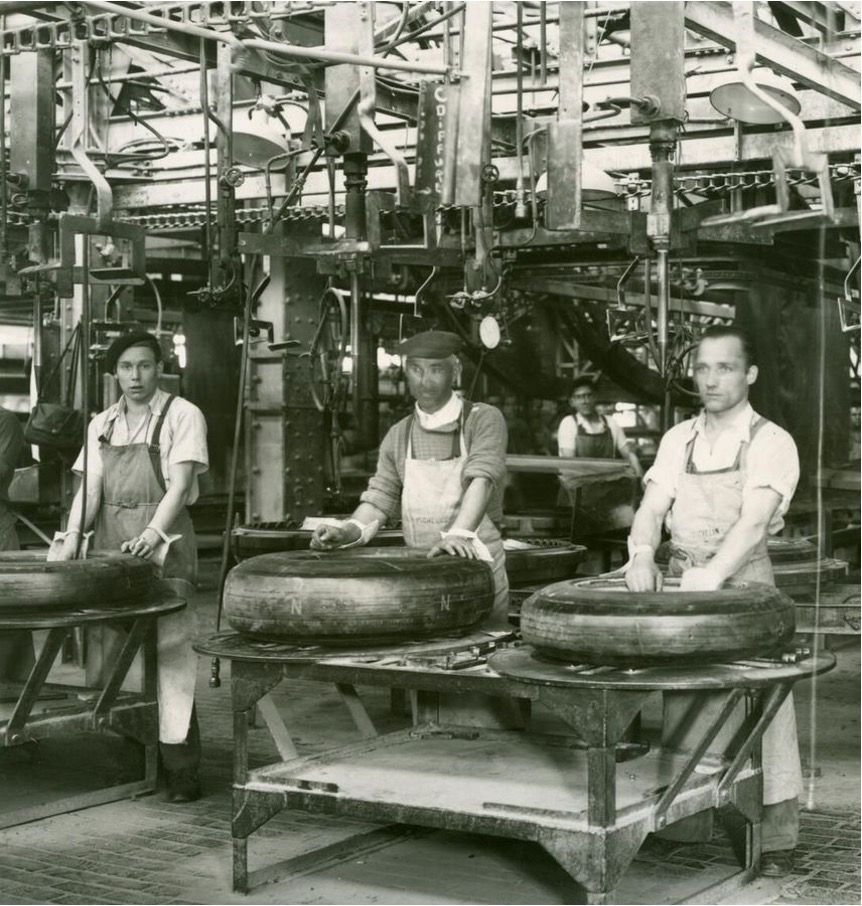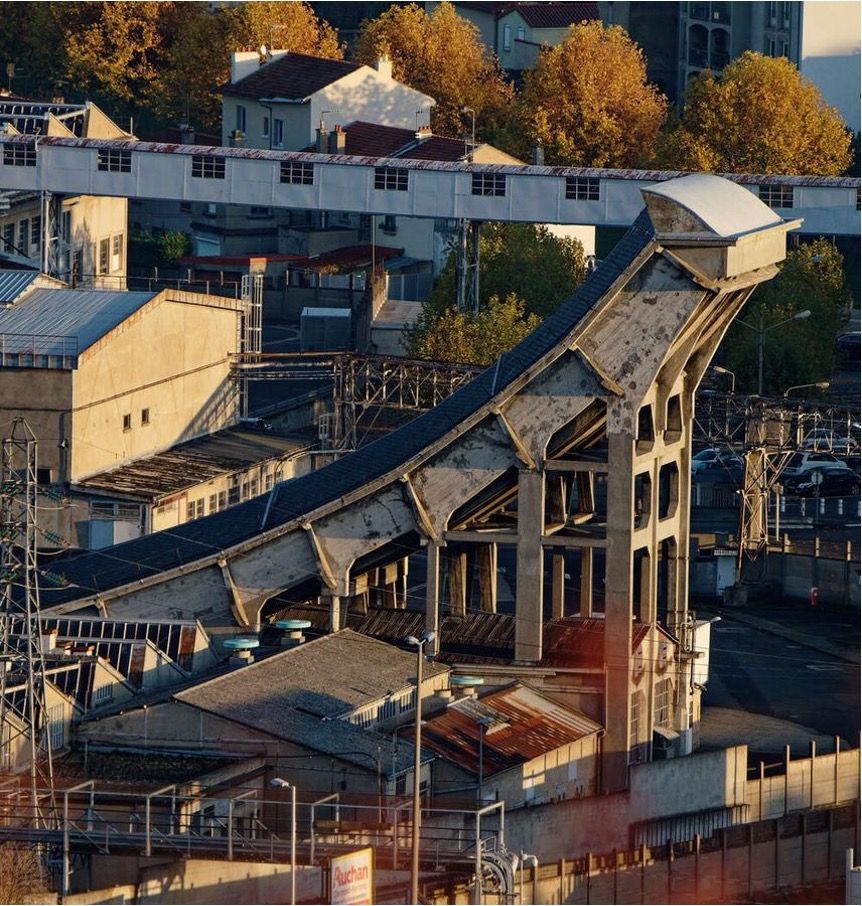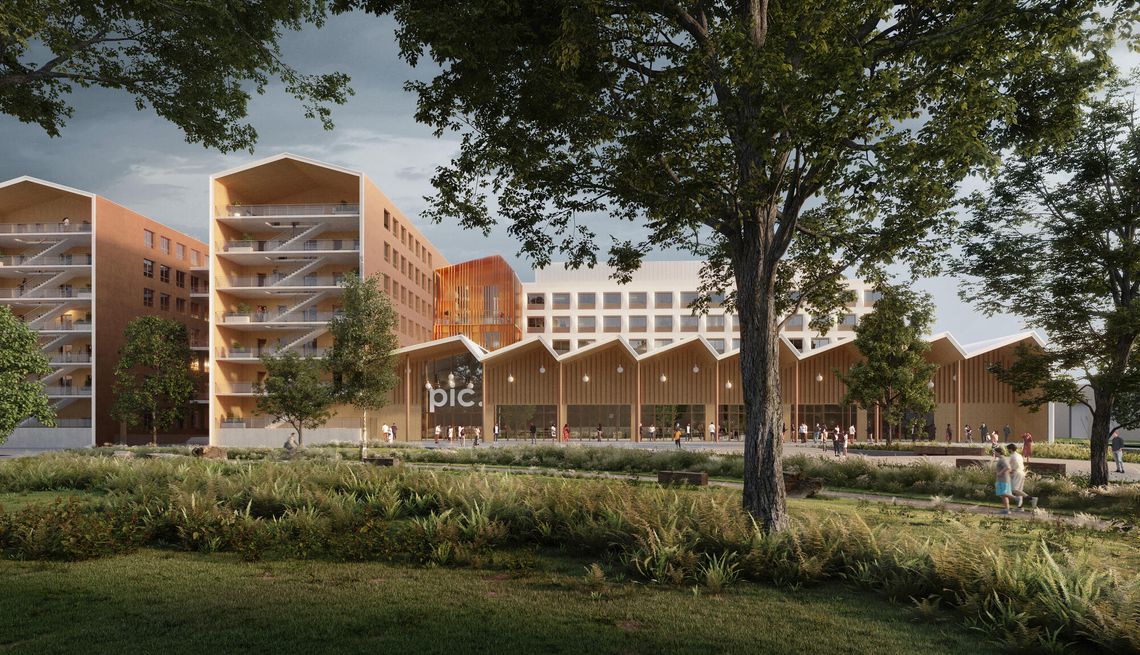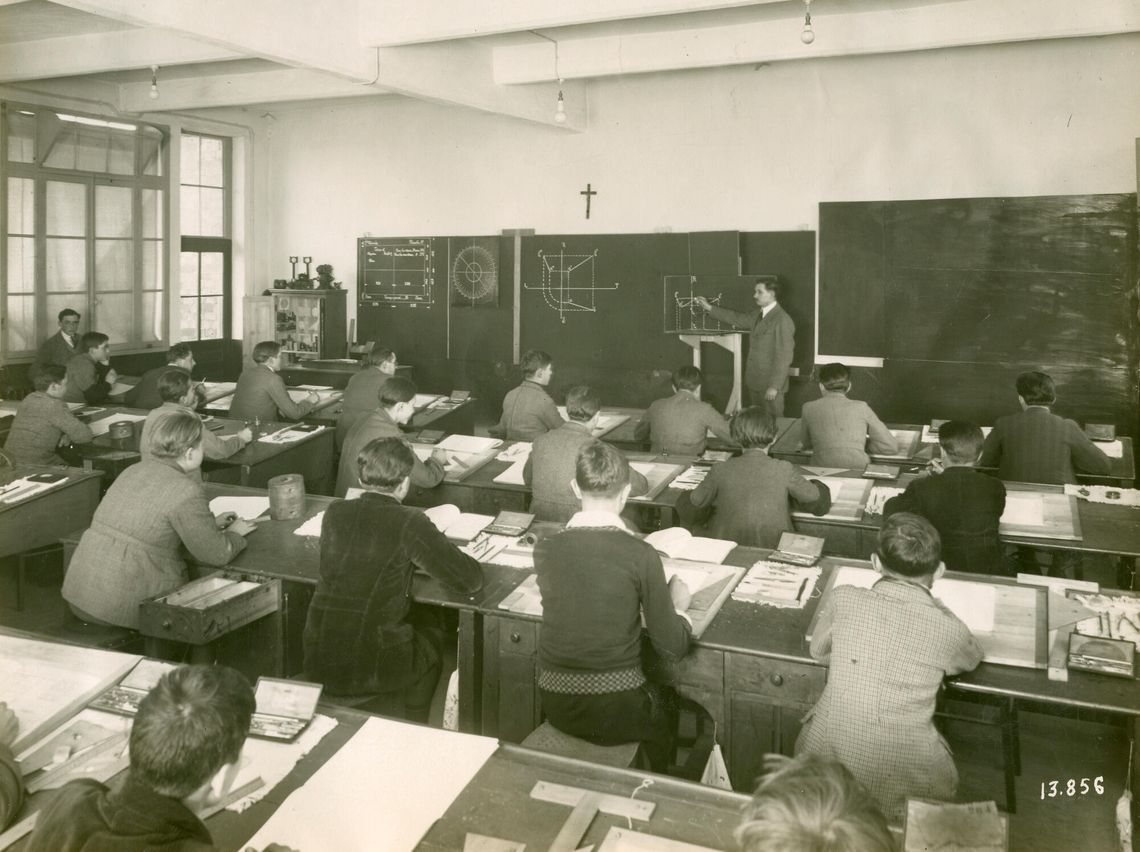PARC CATAROUX
min


Parc Cataroux: an ambitious project designed to convert Michelin’s historic industrial site into an innovation-friendly district, driving economic, social and cultural development.
The project offers further proof of Michelin's strong attachment to the city and region where it was founded.

From an industrial heritage site to a forward-looking innovation hub
A MULTI-STAKEHOLDER COMMUNITY PROJECT
The way the project addresses economic, human and environmental challenges is conducive to new forms of collaboration. It is supported by public authorities and high-level private sector stakeholders.
Michelin chose to conserve its industrial heritage by initiating a community project endorsed by multiple public and private partners determined to keep Michelin’s history alive and give a new lease of life to the Cataroux district.
No single stakeholder can address the collective challenges the world is facing. In the same way, no project can be tackled without factoring in all its economic, social or environmental impacts. Parc Cataroux illustrates this dual imperative of collaboration between the public and private sector - which is now a requisite - for the benefit of civil society as a whole.
The Parc Cataroux project will be the fruit of the joint efforts of all those who want to help write the next chapter in this highly eventful history embodying values of equal opportunities and technological progress to shape a truly sustainable future.
The Auvergne-Rhône-Alpes Region, Clermont Auvergne Metropolitan Area and many other public and private partners, notably the Crédit Agricole Centre France bank have joined forces on this ambitious project.
Parc Cataroux is the embodiment of Michelin’s commitment to equal opportunities and technological progress so as to shape a truly sustainable future for everyone’s benefit. It is being built for people of all ages and from all walks of life who will come there to work and play, live and learn.
It reflects a common desire to have a positive impact on the future by fostering knowledge sharing and access to the arts or health care and encouraging the emergence of new ideas or sustainable technologies. Environmentally-friendly by design, Parc Cataroux will prioritize innovation and future technology to protect the earth’s resources and fight global warming.
Innovation in all shapes and sizes
Innovation is part of the Cataroux site’s lifeblood and is integral to the Parc Cataroux concept, underpinning a valuable and sustainable contribution to the development of Clermont Ferrand and its region. Parc Cataroux will also reshape the future of an entire district and the living environment of its residents.
The Collaborative Innovation Hub (CIH)
The CIH is a unique space covering a surface area of almost 20,000 m2. designed for coworking and coliving with about a hundred rooms and studio apartments. It will foster collaboration and the cross-fertilization of ideas to speed up the emergence of promising projects in the impact economy.
A catalyst for ideas, it will contribute to boosting entrepreneurship and the creative dynamic of the Auvergne-Rhône-Alpes Region by bringing together innovators and promoting synergy and initiatives.
The Sustainable Materials Center (SMC): sustainable innovation
The Sustainable Materials Center is a response to the needs of both Michelin and the local area. It is part of a wider strategy intended to speed up the development of new sectors such as recycling and the transition to the circular economy. It also offers bespoke support to companies, start-ups or research institutes to help them grow their business. The hub offers top-notch services for its customers including an analytical chemistry platform, a process simulation offer and an engineering platform. As of June 2022, the company Carbios, which specializes in the organic recycling of plastic (PET) set up in 10,000 m2 of redeveloped units.
The Manufacture des Talents: a new approach to learning
The Manufacture des Talents or Talent Campus is a vocational training and upskilling center which people for today - and tomorrow’s - jobs. Created in collaboration with a number of prestigious partners (schools, universities, businesses, local government agencies etc.), it includes in particular the Hall 32 school of excellence, an exemplary establishment which is already training students for careers in industry.
The Manufacture des Talents offers a unique and innovative learning experience to help people keep pace with the changing world of work, helping them acquire new skills and adapt. It fosters peer-to-peer exchanges, hands-on experience and immersion. Open to everyone, it delivers lifelong training so that people can exploit their full potential, reflecting a longstanding commitment at Michelin to promote social progress and innovation. It contributes to equal opportunities and inclusion.
“Les Pistes” district: urban innovation
“Les Pistes” district forms the gateway to the city. It covers a total of 10 hectares with 58,000 m2. of surface area and 79,000 m2 of floor area. Michelin’s dream is to convert this district into a prime regional tourist destination as well as an attractive, inclusive place to live, open to the entire population of Clermont-Ferrand and the surrounding area.
The gateway to the town, this district extends over 10 hectares, boasting 58,000 m2 of ground floor area, and 79,000 m2 of additional storeys. Michelin has a dream for this “Les Pistes” district, in order to make it a cutting-edge regional tourism destination and a living space that is attractive, friendly, inclusive, and open to the entire population of the Clermont metropole. An emblematic industrial heritage site, the urban renovation of this historic district, scheduled for 2027, will represent a considerable effort on the part of all stakeholders, both public and private. Over and above its architectural scope, the project aims to bring together all those who believe in the potential of the district so as to open up a new residential and leisure area that can be reclaimed by the local community.
A heritage site with real character
For a century, the Michelin site at Cataroux had a significant impact on the history and development of the city and the region, embodying innovation and technological progress as well as an even loftier ambition: Michelin’s desire to make a positive social and societal contribution to its environment, far surpassing its industrial role.
A symbol of innovation
A symbol of innovation
Inaugurated in 1921, Cataroux was an innovation powerhouse representing a major R&D center for the Michelin Group. The site houses measurement and chemistry labs as well as test tracks and proving grounds for innovation.

The “Va-et-vient” (back and forth) tracks that have become emblematic of the transformation and development of the industrial town. Supported by Michelin’s expertise in the field of materials, the Cataroux site continuously renews itself, and develops very early production capacities going well beyond the tire.
Impact on urban planning
Impact on urban planning
In the 1910s, Michelin already had a headcount of around 4,000 working on 180 hectares of land between the historic cities of Clermont and Montferrand.

In the sixty years following the inauguration of the Cataroux plant, almost 28,000 Michelin employees would work in the Clermont area. The city of Clermont-Ferrand, prefecture of a mainly agricultural department at the turn of the century, would see its population more than double.
Reflection of a novel social policy
Reflection of a novel social policy
Michelin progressively shaped its universal vision of a social policy around the Cataroux plant focusing on access to health care, sport and education.

Schools, clinics, accommodation, shops, and sports infrastructures were the pillars of this social dynamics that allowed the workers in the post-war period, and their families, to access decent living conditions, while developing the company’s attractiveness.